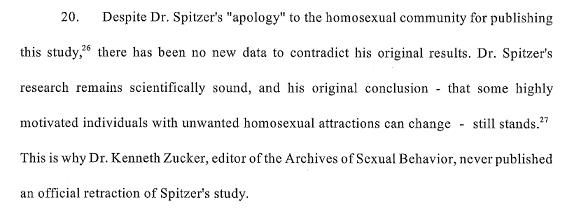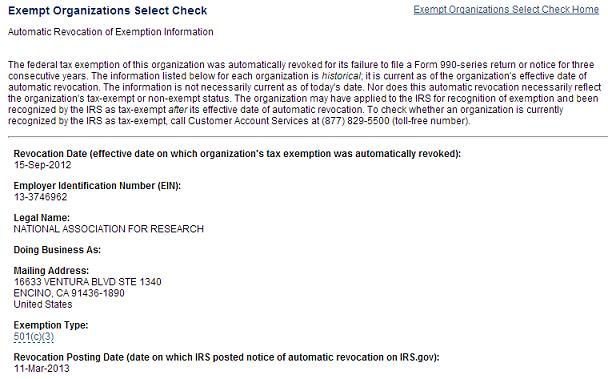In November, 2012 on behalf of several former clients of Jews Offering New Alternatives to Healing (formerly Homosexuality), the Southern Poverty Law Center initiated a complaint in New Jersey (Ferguson et al v. JONAH). The complaint seeks damages under New Jersey’s consumer protection laws and challenges JONAH’s claims to be able to help people change sexual orientation.
In support of JONAH, Michelle Cretella, a pediatrician, filed an amicus brief with various claims regarding sexual reorientation. There are many glaring problems with this brief. I hope to examine several of them over the coming days, including her selective citation of my work.
A huge problem for NARTH has been Robert Spitzer’s retraction of his 2001 study on sexual reorientation, and Cretella briefly addresses Spitzer’s recent statements:
I hope Cretella does not do pediatrics as she suggests doing sexual reorientation. For her patients’ sake, I hope she relies on new studies and takes into account all relevant studies to inform her advice. On sexual orientation, there have been several important studies about sexual orientation since 2001 which are relevant.
And then regarding Zucker and the publication of a retraction: This is misleading. In Zucker’s journal, Spitzer did publish a letter to the editor which apologized for what he now believes are erroneous conclusions. Regarding Zucker’s reasons for not doing something in addition to Spitzer’s letter, I will let him speak for himself. In a widely published May 20, 2012 email, Zucker stated:
Dear Colleagues:
1. As some of you know, Robert Spitzer has recently expressed his reservations/regret/remorse about the study he published in Archives of Sexual Behavior in 2003, in which he interviewed 200 men and women who had sought out some variant of “reparative therapy” to deal with their unwanted homoerotic attractions, desires, etc. This was first reported on in an article in American Prospect and then went viral the way all good things should do in the post-modern era…the story even reached the front page of the New York Times in an article by Ben Carey and then an Editorial in the NYT.
2. Because there is a lot of interest in the original study, the author’s regret, etc., I have asked the publisher to give open access to the original Spitzer article, the 26 peer commentaries that followed it, Spitzer’s reply, my Editorial that introduced the “target” article, and Spitzer’s recent Letter to the Editor in which he expresses his reappraisal of the study. The open access period will be for 2 months, where anyone from Australia to Zimbabwe can download these papers for free. I am grateful for this kind gesture on the publisher’s part.
3. I have one suggestion: read the Discussion of the original Spitzer article and the 26 peer commentaries.
Feel free to pass this message on to colleagues and relevant listservs.
Best regards
Ken Zucker, Ph.D.
Editor, Archives of Sexual Behavior
Cretella implies that Zucker took a stand on Spitzer’s original conclusions regarding change. Rather, Zucker honored Bob Spitzer’s request to publish a letter and made the original work available.
Cretella also cites my literature reviews from 1998 and 2002 but does not include my more recent views. I will address this in a future post.

